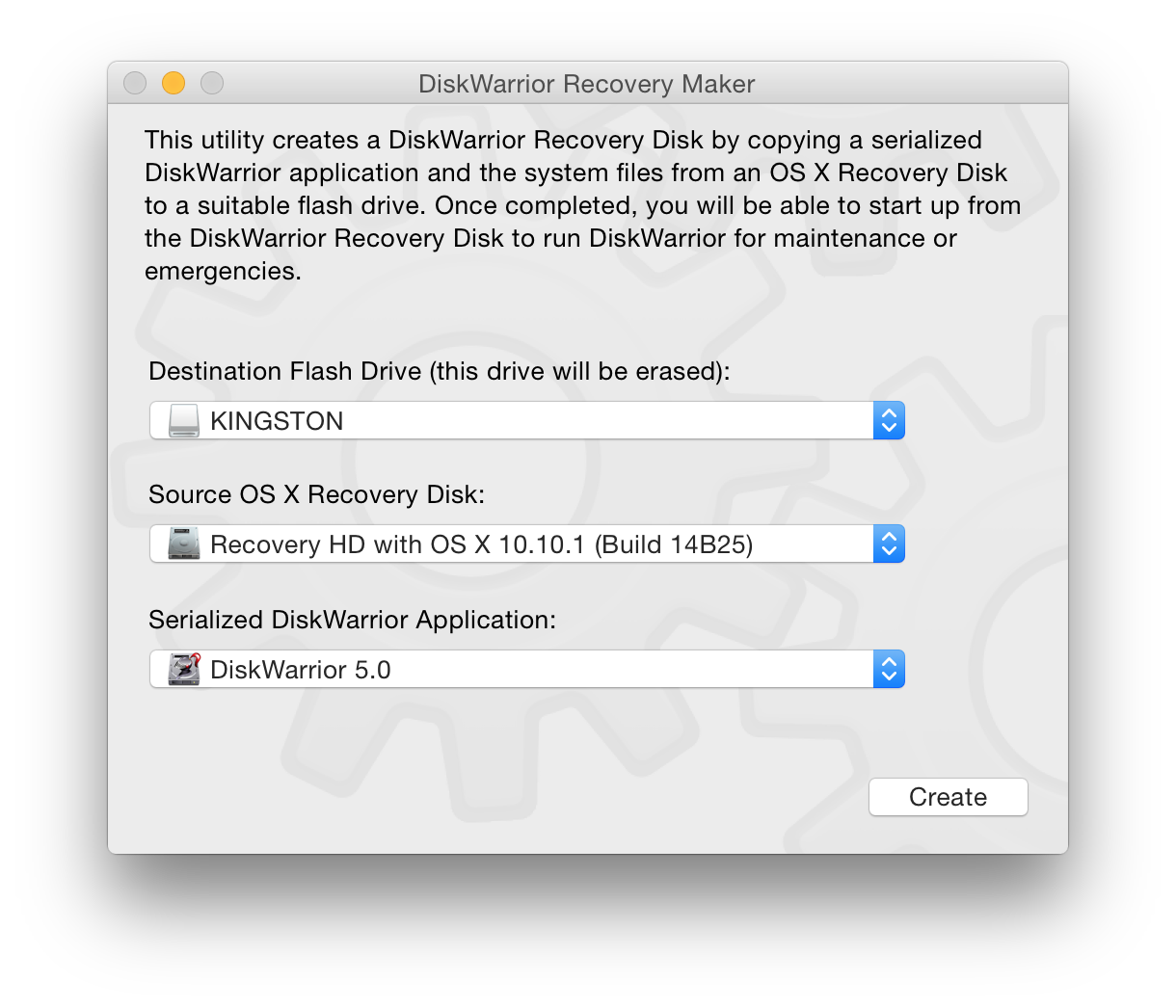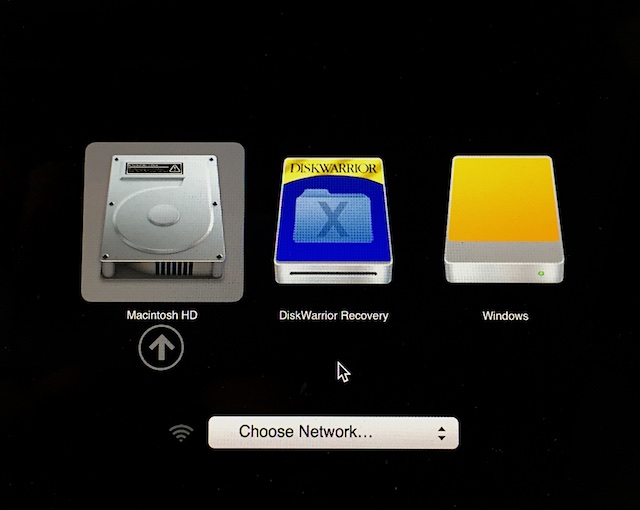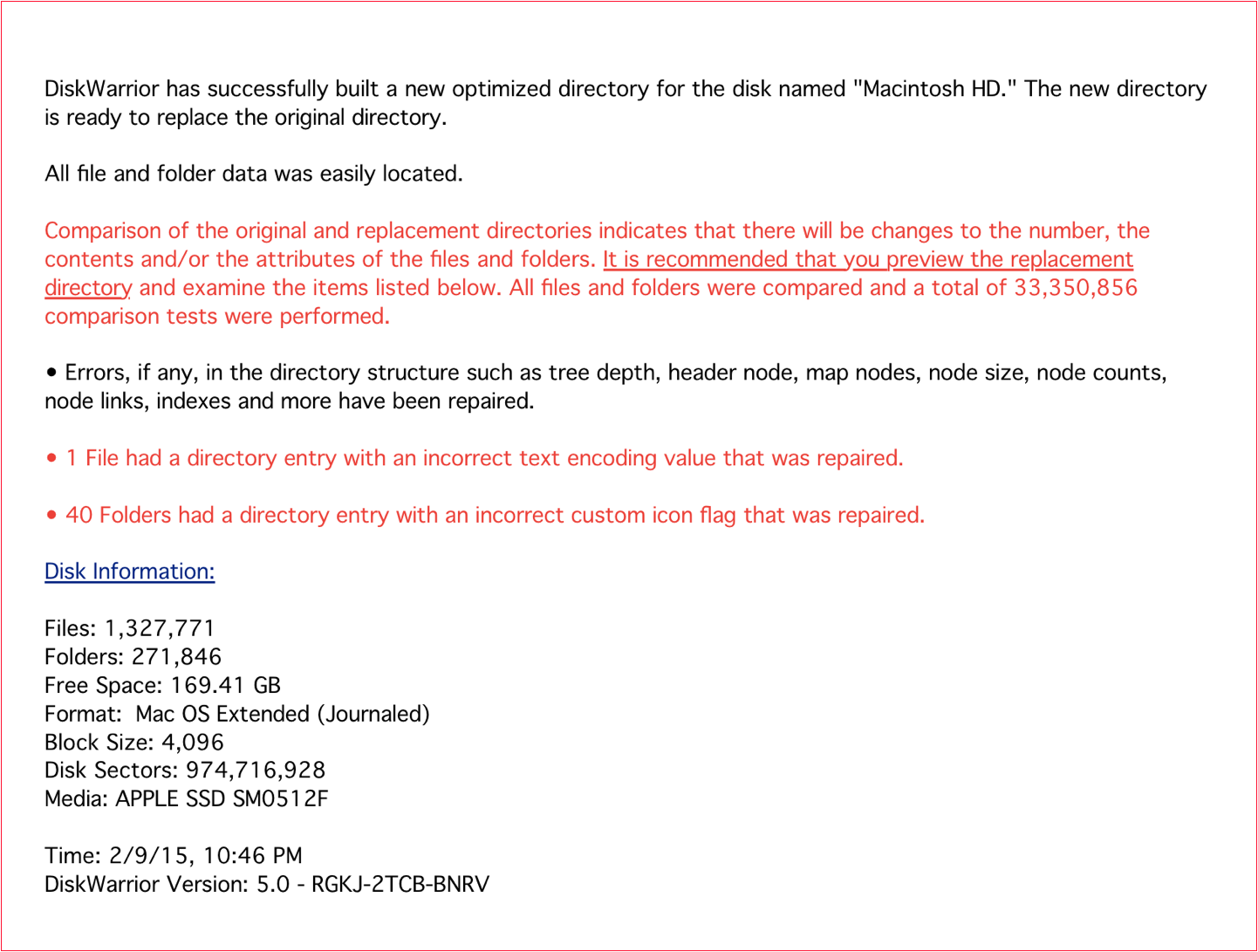Disk Warrior Updated to Version 5 and Available on USB drive: (3) Making a Rescue Disk and Running the Repair

AMITIAE - Tuesday 10 February 2015
|
Disk Warrior Updated to Version 5 and Available on USB drive: (3) Making a Rescue Disk and Running the Repair |
 |
|
|
By Graham K. Rogers
DiskWarrior Recovery Drive Install I began with the creation of a recovery system on a flash drive. The DiskWarrior information in the Recovery Maker folder on the DW flash drive indicates that a drive of at least 2 GB is needed.
I began with the creation of a recovery system on a flash drive. The DiskWarrior information in the Recovery Maker folder on the DW flash drive indicates that a drive of at least 2 GB is needed.
The one I had in my pocket was 16 GB so would do. However, I copied some of the data temporarily onto the hard drive as the process would delete everything, in a similar way to installation of OS X onto external media. I copied the Disk Warrior Recovery Maker to the Applications folder and when this was run, the panel shows three buttons: the destination drive (all data will be deleted); the OS X source (a recovery drive which in my case showed 10.10.1); and the Disk Warrior Source (flash drive).

To use this, I would need to start the computer with the Option key held down, then select the correct disk from those offered. It did not appear in the list of disks in System Preferences > Startup Disk.

DiskWarrior Run from a Recovery DriveWhen I selected the recovery disk from the options available startup was unsurprisingly slow. This is common when running OS X from drives that connect via USB 2. When the startup process was complete, I thought I had done it wrong: I was faced with the Rescue partition screen. However, instead of the usual four items (Restore from Time Machine, Reinstall OS X, Online Help, Disk Utility) there was a fifth item at the top of the list: Alsoft Disk Warrior.

1 file had a directory entry with an incorrect text encoding value These had been repaired.

See Also:
Graham K. Rogers teaches at the Faculty of Engineering, Mahidol University in Thailand where he is also Assistant Dean. He wrote in the Bangkok Post, Database supplement on IT subjects. For the last seven years of Database he wrote a column on Apple and Macs. He is now continuing that in the Bangkok Post supplement, Life. |
|

For further information, e-mail to
Back to
eXtensions
Back to
Home Page